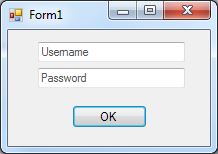Tag Archives: winforms
Create and extract .zip files in C#
Sadly there aren’t many flexible or efficient ways to create .zip files in .NET prior to .NET 4.5. Thankfully some people took the initiative and created some very easy to use libraries for creating/extracting and updating .zip files. My two all time favourite are DotNetZip and SharpZipLib.
For this example I will be using the DotNetZip library.
First you will need to download the library (.dll) either from http://dotnetzip.codeplex.com/ or from http://www.fluxbytes.com/?dl_name=DotNetZipLib_v1.9.1.8.rar. The file should contain quite a few libraries, so choose the one that suits your needs the most and add it as a reference in your project.
Posted in C#.
Tagged C#, csharp, DotNetZipLib, SharpZipLib, snippet, tutorial, winforms
How to register a global hotkey for your application in C#
If you are looking for a way to set a global hotkey for your C# application that can be used without your form having focus I have created a decently commentated example for you below that you can use.
1 2 3 4 5 6 7 8 9 10 11 12 13 14 15 16 17 18 19 20 21 22 23 24 25 26 27 28 29 30 31 32 33 34 35 36 37 38 39 40 41 42 43 44 45 46 47 48 49 50 51 52 53 54 | using System; using System.Windows.Forms; namespace GlobalHotkeyExampleForm { public partial class ExampleForm : Form { [System.Runtime.InteropServices.DllImport("user32.dll")] private static extern bool RegisterHotKey(IntPtr hWnd, int id, int fsModifiers, int vk); [System.Runtime.InteropServices.DllImport("user32.dll")] private static extern bool UnregisterHotKey(IntPtr hWnd, int id); enum KeyModifier { None = 0, Alt = 1, Control = 2, Shift = 4, WinKey = 8 } public ExampleForm() { InitializeComponent(); int id = 0; // The id of the hotkey. RegisterHotKey(this.Handle, id, (int)KeyModifier.Shift, Keys.A.GetHashCode()); // Register Shift + A as global hotkey. } protected override void WndProc(ref Message m) { base.WndProc(ref m); if (m.Msg == 0x0312) { /* Note that the three lines below are not needed if you only want to register one hotkey. * The below lines are useful in case you want to register multiple keys, which you can use a switch with the id as argument, or if you want to know which key/modifier was pressed for some particular reason. */ Keys key = (Keys)(((int)m.LParam >> 16) & 0xFFFF); // The key of the hotkey that was pressed. KeyModifier modifier = (KeyModifier)((int)m.LParam & 0xFFFF); // The modifier of the hotkey that was pressed. int id = m.WParam.ToInt32(); // The id of the hotkey that was pressed. MessageBox.Show("Hotkey has been pressed!"); // do something } } private void ExampleForm_FormClosing(object sender, FormClosingEventArgs e) { UnregisterHotKey(this.Handle, 0); // Unregister hotkey with id 0 before closing the form. You might want to call this more than once with different id values if you are planning to register more than one hotkey. } } } |
Posted in C#.
Tagged C#, csharp, global hotkey, RegisterHotKey, snippet, UnregisterHotKey, winforms
How to know if a process has stopped or started using events in C#
There are numerous of ways to detect if a new process has started or stopped, sadly the majority of them are extremely inefficient as it requires you to keep looping through the active process constantly to see if a new one appeared in the array or if one is not there any more.
Luckily the windows Win32_ProcessStartTrace and Win32_ProcessStopTrace classes are here to help out.
The first thing we need to do is reference System.Management.dll in our project. Then we need to define the scope in your class which we will be using.
1 | using System.Management; |
After that we need to initialise the class which will contain the process start and process stopped events and add the handlers and their methods.
Add the two following variables in your Class.
1 2 | ManagementEventWatcher processStartEvent = new ManagementEventWatcher("SELECT * FROM Win32_ProcessStartTrace"); ManagementEventWatcher processStopEvent = new ManagementEventWatcher("SELECT * FROM Win32_ProcessStopTrace"); |
In your constructor the event handlers need to be added.
1 2 | processStartEvent.EventArrived += new EventArrivedEventHandler(processStartEvent_EventArrived); processStopEvent.EventArrived += new EventArrivedEventHandler(processStopEvent_EventArrived); |
and then their event methods that will be trigged when a process either starts or stops.
1 2 3 4 5 6 7 8 9 | void processStartEvent_EventArrived(object sender, EventArrivedEventArgs e) { // A new process has started } void processStopEvent_EventArrived(object sender, EventArrivedEventArgs e) { // A process has been stopped } |
And finally we need to start the events by using
1 2 | processStartEvent.Start(); processStopEvent.Start(); |
Posted in C#.
Tagged C#, csharp, process start event, process stop event, snippet, Win32_ProcessStartTrace, Win32_ProcessStopTrace, winforms
Remove digital signature from a file using C#
There are two reasons why you might want to consider removing the digital signature from some of the files you are using, especially third party libraries.
The first reason is because in many cases it will greatly speed up your programs start-up time. The reason for that is because if a file is signed with Microsoft digital certificate as an example on runtime it will attempt to verify the signature which in most cases it requires an internet connection. In cases where the user might not have an active internet connection or if the verification attempt is blocked by a firewall or any other reason, it will greatly increase the time your application will take to start.
Another important reason for removing a digital signature from a library you want to distribute alongside with your software is that a lot of users feel alarmed when an application tries to establish a connection at start-up, especially if the type of the application you are making doesn’t sound like the type it requires to connect somewhere.
Thankfully it is fairly easy to remove a signature from a file using the ImageRemoveCertificate API function. Below you can find a snippet that illustrates how it can be implemented.
1 2 | [System.Runtime.InteropServices.DllImport("Imagehlp.dll ")] private static extern bool ImageRemoveCertificate(IntPtr handle, int index); |
1 2 3 4 5 6 7 8 | private void UnsignFile(string file) { using (System.IO.FileStream fs = new System.IO.FileStream(file, System.IO.FileMode.Open, System.IO.FileAccess.ReadWrite)) { ImageRemoveCertificate(fs.SafeFileHandle.DangerousGetHandle(), 0); fs.Close(); } } |
If you would like to use the above code but have no knowladge on how to compile it then simply download the already compiled version from FileUnsigner v1.0.
Posted in C#.
Tagged C#, csharp, digital signiture, ImageRemoveCertificate, snippet, source, winforms









